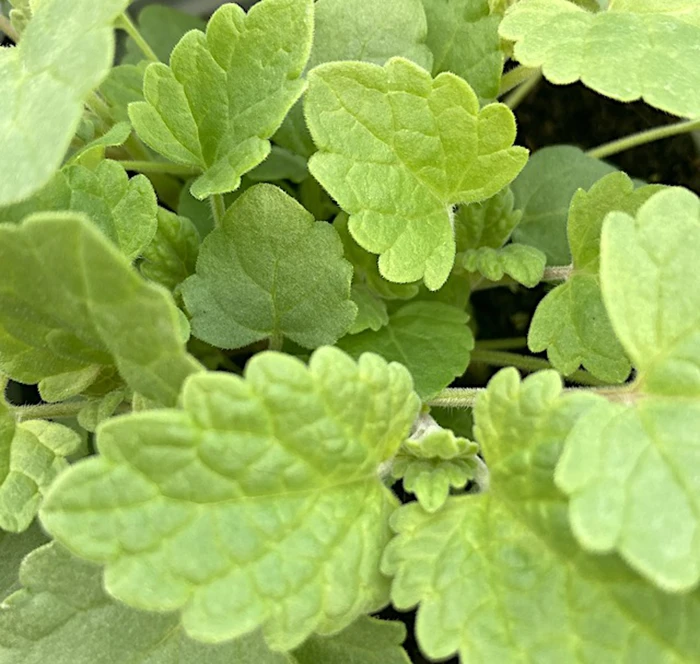
Ever watched your feline friend transform from a dignified house cat into a whirling dervish of purrs, rolls, and playful aggression after a sniff of something green? That's the magic of catnip, but have you ever stopped to wonder exactly what kind of plant it is? Specifically, is catnip a mint plant, or is it something else entirely? Let's dig into the botanical world to uncover the truth behind this kitty stimulant.
Is Catnip a Mint Plant? Understanding the Catnip Family
The answer is yes! Catnip (Nepeta cataria) belongs to the Lamiaceaefamily, which is commonly known as the mint family. This expansive family boasts a diverse range of plants, many of which are prized for their aromatic oils and culinary uses. Think of plants like basil, rosemary, lavender, and, of course, various types of mint. What these plants share are square stems, opposite leaves, and often fragrant foliage. So, while catnip might have its own unique effect on our feline companions, it's definitely part of the broader mint family.
Delving Deeper: What Makes Catnip Special Within the Mint Family?
Okay, so catnip is a mint plant, but what makes it so special? The key ingredient isnepetalactone, a volatile oil found in the leaves and stems of the plant. This compound is what triggers the euphoric response in about 50-75% of cats. Not all cats are susceptible to catnip's charms; this is a genetic trait. Kittens generally don't react to catnip until they're several months old. Even among adult cats, the intensity of the response can vary widely.
However, catnip offers more than just entertainment for our pets. It's also a plant with a history of traditional medicinal uses for humans. It has been used to relieve anxiety, improve sleep, and even soothe digestive upset, though further research is needed to fully confirm these benefits.
Botanical Characteristics of Catnip (Nepeta cataria)
Let's get a bit more specific about the physical characteristics of catnip. Understanding these features can help you identify catnip growing wild or decide if you want to cultivate it in your own garden.
- Stems: Catnip has square stems, a signature trait of the mint family.
- Leaves: The leaves are typically heart-shaped, grayish-green in color, and have toothed edges. They are also arranged in opposite pairs along the stem.
- Flowers: Catnip produces small, white or pale purple flowers arranged in clusters. These flowers bloom throughout the summer.
- Height: Catnip plants can grow to be between 1 to 3 feet tall.
- Habitat: Catnip is a hardy perennial, meaning it lives for more than two years. It's native to Europe and Asia but has naturalized in many parts of the world, including North America. It often thrives in sunny, well-drained locations.
Comparing Catnip to Other Mints: Key Differences
While catnip shares the family name with other mints, it does have some key differences. For instance, the scent of catnip is often described as more pungent and earthy than the sweeter, more refreshing aroma of peppermint or spearmint. Catnip leaves also tend to be more textured and fuzzy than those of many other mint varieties. More importantly, the chemical composition of the essential oils differs significantly, leading to catnip’s unique effect on felines. While most mints are primarily used for flavoring food and beverages, catnip’s primary claim to fame is its ability to stimulate cats.
Growing Catnip: Bringing the Minty Magic to Your Garden
If you're interested in providing a natural source of joy for your cat (and maybe even using it yourself for herbal teas), growing catnip is relatively easy. Here are a few tips:
- Sunlight: Catnip prefers full sun (at least 6 hours of direct sunlight per day), but it can tolerate partial shade.
- Soil: Well-drained soil is crucial. Catnip doesn't like to sit in soggy conditions.
- Propagation: You can grow catnip from seeds or cuttings. Seeds can be started indoors or directly sown in the garden. Cuttings can be taken from established plants and rooted in water or soil.
- Watering: Water regularly, especially during dry periods. However, avoid overwatering, as this can lead to root rot.
- Pruning: Pruning catnip plants will encourage bushier growth and more abundant foliage. This also helps prevent the plant from becoming too leggy.
- Pest Control: Catnip is relatively pest-resistant, but you might encounter aphids or spider mites. Treat infestations with insecticidal soap or neem oil.
- Containment: Be aware that catnip can spread through seeds, so you might want to grow it in a container to prevent it from taking over your garden.
When harvesting, simply cut the stems and leaves of the plant. You can use fresh catnip directly, or you can dry it for later use. To dry catnip, hang the stems upside down in a cool, dark, well-ventilated area until the leaves are brittle. Once dried, store the catnip in an airtight container.
Growing catnip can be a rewarding experience, both for you and your feline friend. Just be prepared for the occasional feline frenzy in your garden!
Speaking of gardening, make sure you're comfortable while tending to your catnip patch! Consider the KVR Upgraded Garden Kneeler and Seat with Thicken & Widen Soft Kneeling Pad – a handy foldable gardener stool. This gardening seat features two tool pouches for easy access to your gardening tools, making it a perfect addition to your gardening equipment. It would also make a great gardening gift for any gardening enthusiast! You can find it here: KVR Upgraded Garden Kneeler and Seat.